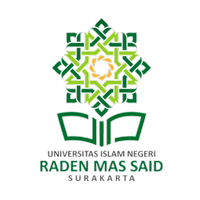Ahmad, M., Arifin*, A., Zain, F. M., Pakri, R., & Jasni, S. A. (2019). Anglo-Siamese Treaty Of 1909: Its Implications On Kelantan’s Political And Delineation Status. European Proceedings of Social and Behavioural Sciences, Role(s) and Relevance of Humanities for Sustainable Development. https://doi.org/10.15405/epsbs.2019.09.43
Anīs, I., Muntaṣir, A. Ḥalīm, al-Ṣawālihī, A., & Ahmad, M. K. (2011). Mu’jamu al-Wasīth (5th ed.). Maktabah Syurūq al-Dawliyyah.
Arismunandar, A., Afriantoni, A., & Asmuni, A. (2019). MELAYU PATTANI THAILAND: MUSLIM MINORITY RELIGION EXPRESSION IN THE MIDDLE OF NON MUSLIM MAJORITY. Journal of Malay Islamic Studies, 3(1), 63–74. https://doi.org/10.19109/jmis.v3i1.4576
Atjeh, A. (1985). SEKITAR MASUKNYA ISLAM DI INDONESIA (5th ed.). CV. RAMADHANI.
Chachavalpongpun, P. (2023). Peace and Conflict Studies in Thailand: The Primacy of the State’s Narrative of Security. Asian Journal of Peacebuilding, 11(1), 95–117. https://doi.org/10.18588/202305.00a336
Chinda, C., Unal, C., Marchment, Z., & Gill, P. (2023). The Impact of Public Holidays on Insurgent Attacks: The Case of Thailand. Terrorism and Political Violence, 1–16. https://doi.org/10.1080/09546553.2023.2222810
Eum, I. (2008). A Study on Current Culinary Culture and Religious Identity in the Gulf Region: Focused on the Ashura Practice among the Shia Muslims of Bahrain and Kuwait. International Area Review, 11(2), 55–73. https://doi.org/10.1177/223386590801100203
Fibiger, T. (2010). ‘Ashura in Bahrain: Analyses of an Analytical Event. Social Analysis, 54(3). https://doi.org/10.3167/sa.2010.540302
Harish, S. P. (2006). Ethnic or Religious Cleavage? Investigating the Nature of the Conflict in Southern Thailand. Contemporary Southeast Asia, 28(1), 48–69. https://doi.org/10.1355/CS28-1C
Ḥurr al-ʿĀmilī, M. ibn al-Ḥasan. (1995). Wasāʾil al-Shīʿah (Vol. 14). Muʾassasat Āl al-Bay tli-Iḥyāʾ al-Turāth.
Ahmad, M., Arifin*, A., Zain, F. M., Pakri, R., & Jasni, S. A. (2019). Anglo-Siamese Treaty Of 1909: Its Implications On Kelantan’s Political And Delineation Status. European Proceedings of Social and Behavioural Sciences, Role(s) and Relevance of Humanities for Sustainable Development. https://doi.org/10.15405/epsbs.2019.09.43
Anīs, I., Muntaṣir, A. Ḥalīm, al-Ṣawālihī, A., & Ahmad, M. K. (2011). Mu’jamu al-Wasīth (5th ed.). Maktabah Syurūq al-Dawliyyah.
Arismunandar, A., Afriantoni, A., & Asmuni, A. (2019). MELAYU PATTANI THAILAND: MUSLIM MINORITY RELIGION EXPRESSION IN THE MIDDLE OF NON MUSLIM MAJORITY. Journal of Malay Islamic Studies, 3(1), 63–74. https://doi.org/10.19109/jmis.v3i1.4576
Atjeh, A. (1985). SEKITAR MASUKNYA ISLAM DI INDONESIA (5th ed.). CV. RAMADHANI.
Chachavalpongpun, P. (2023). Peace and Conflict Studies in Thailand: The Primacy of the State’s Narrative of Security. Asian Journal of Peacebuilding, 11(1), 95–117. https://doi.org/10.18588/202305.00a336
Chinda, C., Unal, C., Marchment, Z., & Gill, P. (2023). The Impact of Public Holidays on Insurgent Attacks: The Case of Thailand. Terrorism and Political Violence, 1–16. https://doi.org/10.1080/09546553.2023.2222810
Eum, I. (2008). A Study on Current Culinary Culture and Religious Identity in the Gulf Region: Focused on the Ashura Practice among the Shia Muslims of Bahrain and Kuwait. International Area Review, 11(2), 55–73. https://doi.org/10.1177/223386590801100203
Fibiger, T. (2010). ‘Ashura in Bahrain: Analyses of an Analytical Event. Social Analysis, 54(3). https://doi.org/10.3167/sa.2010.540302
Harish, S. P. (2006). Ethnic or Religious Cleavage? Investigating the Nature of the Conflict in Southern Thailand. Contemporary Southeast Asia, 28(1), 48–69. https://doi.org/10.1355/CS28-1C
Ḥurr al-ʿĀmilī, M. ibn al-Ḥasan. (1995). Wasāʾil al-Shīʿah (Vol. 14). Muʾassasat Āl al-Bay tli-Iḥyāʾ al-Turāth.
Japarudin, J. (2017). TRADISI BULAN MUHARAM DI INDONESIA. Tsaqofah dan Tarikh: Jurnal Kebudayaan dan Sejarah Islam, 2(2), 167. https://doi.org/10.29300/ttjksi.v2i2.700
Khairuddin, M.Ag, Prof. Dr. H. A. (2017). Asyura: Antara Doktrin, Historis dan Antropologis Perspektif Dakwah Pencerahan. Al-Hiwar : Jurnal Ilmu dan Teknik Dakwah, 3(5). https://doi.org/10.18592/al-hiwar.v3i5.1192
Kulaynī, M. ibn Y. (1984). Al-Kāfī (Vol. 4). Dār al-Kutub al-Islāmīyah - Tehran.
Liow, J. C. (2004). The Security Situation in Southern Thailand: Toward an Understanding of Domestic and International Dimensions. Studies in Conflict & Terrorism, 27(6), 531–548. https://doi.org/10.1080/10576100490513701
Manan, A., Armi, F. R., & Amri, W. Y. (2022). The Expansion of Islam in Pattani, South Thailand: A Historical Analysis. Journal of Al-Tamaddun, 17(1), 85–95. https://doi.org/10.22452/JAT.vol17no1.7
McCargo, D. (2008). Tearing apart the land: Islam and legitimacy in Southern Thailand (1. publ). Cornell Univ. Press.
Ockey, J. (2021). Pattani or Patani: Memory, forgetting, history, and the conflict in Southern Thailand. Asia Pacific Viewpoint, 62(2), 179–192. https://doi.org/10.1111/apv.12299
Panae, A., Suryadi, S., & Noor, R. (2021). Keindahan Ritual Bubur Sura pada Bulan Muharram di Pattani Thailand Selatan. Anuva: Jurnal Kajian Budaya, Perpustakaan, Dan Informasi, 5(3), 377–386. https://doi.org/10.14710/anuva.5.3.377-386
Parkes, A. (2021). The Ashura Assemblage: Karbala’s Religious Urban Fabric and Reproduction of Collective Shiʿi Identity. Religions, 12(10), 904. https://doi.org/10.3390/rel12100904
Scharbrodt, O. (2023). Contesting ritual practices in Twelver Shiism: Modernism, sectarianism and the politics of self-flagellation ( taṭbīr ). British Journal of Middle Eastern Studies, 50(5), 1067–1090. https://doi.org/10.1080/13530194.2022.2057279
Setiarini, N. I., Misbah, M., & Mawardi, K. (2022). BUDAYA MUSLIM MELAYU PATTANI THAILAND SELATAN. Tsaqofah Dan Tarikh: Jurnal Kebudayaan Dan Sejarah Islam, 6(2), 24. https://doi.org/10.29300/ttjksi.v6i2.4440
Ṭūsī, M. ibn al-Ḥasan. (1986). Tahdhīb al-Aḥkām fī Sharḥ al-Muqniʿah lil-Shaykh Mufīd Riḍwān Allāh ʿalayh (Vol. 4). Dār al-Kutub al-Islāmīyah.


